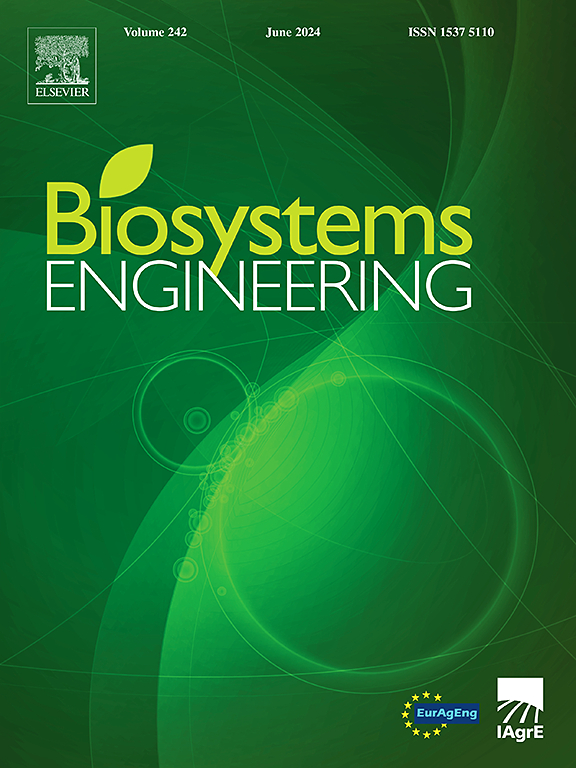体重预测在荷斯坦奶牛非妊娠期和产后期的应用
IF 5.3
1区 农林科学
Q1 AGRICULTURAL ENGINEERING
引用次数: 0
摘要
基于深度传感技术,研制了荷斯坦奶牛非接触式体重预测系统,用于预测奶牛非妊娠期和产后体重变化。该系统利用英特尔RealSense D455深度摄像头,从奶牛的背部、臀部和侧面区域捕获深度图像信息,通过系统的数据处理工作流程提取有效的体表特征数据。实验结果表明,高斯过程回归(Gaussian Process Regression, GPR)模型在奶牛背部区域的表现最为优异。以非妊娠期奶牛号cid603为例,预测精度均方根误差(RMSE)为19.37 kg,平均绝对百分比误差(MAPE)为1.82%;产后奶牛数为cid700时,模型的RMSE为22.35 kg, MAPE为2.74%,具有较强的模型泛化能力。与传统的基于体长和胸围测量的农场方法相比,本研究提出的体重预测系统显著提高了体重预测的准确性和稳定性,特别是在捕捉生理状态变化(如产后体重减轻)方面。实验结果表明,GPR模型对奶牛背部特征数据的预测能力和泛化能力最好,可有效支持奶牛体重的精确监测。未来的研究方向应侧重于优化图像预处理技术,纳入更多的生理参数(如采食量),整合不同角度的深度信息,增强系统对复杂环境的适应性,从而增强权重预测模型的通用性和可靠性。本文章由计算机程序翻译,如有差异,请以英文原文为准。
Application of weight prediction for Holstein dairy cows in non-pregnant and postpartum stages
A non-contact weight prediction system for Holstein dairy cows was developed based on depth sensing technology, designed to predict weight changes during non-pregnant and postpartum stages. The system utilises an Intel RealSense D455 depth camera to capture depth image information from cow's dorsal, hips, and side regions, extracting effective body surface feature data through a systematic data processing workflow. Experimental results demonstrate that the Gaussian Process Regression (GPR) model performed most excellently in the cow's dorsal region. For example, with cow number cid603 during the non-pregnant period, prediction accuracy reached a root mean square error (RMSE) of 19.37 kg and a mean absolute percentage error (MAPE) of 1.82 %; with cow number cid700 in the postpartum stage, the model maintained an RMSE of 22.35 kg and MAPE of 2.74 %, exhibiting robust model generalisation capability. Compared to traditional farm methods based on body length and heart girth measurements, the weight prediction system proposed in this study significantly improved the accuracy and stability of weight prediction, especially in capturing physiological state changes (such as postpartum weight loss). Experimental results indicate that the GPR model exhibited the best predictive ability and generalisation with feature data from the dorsal region, effectively supporting precise monitoring of dairy cow weight. Future research directions should focus on optimising image preprocessing techniques, incorporating more physiological parameters (such as feed intake), and integrating depth information from different angles to enhance the system's adaptability in complex environments, thereby strengthening the universality and reliability of the weight prediction model.
求助全文
通过发布文献求助,成功后即可免费获取论文全文。
去求助
来源期刊

Biosystems Engineering
农林科学-农业工程
CiteScore
10.60
自引率
7.80%
发文量
239
审稿时长
53 days
期刊介绍:
Biosystems Engineering publishes research in engineering and the physical sciences that represent advances in understanding or modelling of the performance of biological systems for sustainable developments in land use and the environment, agriculture and amenity, bioproduction processes and the food chain. The subject matter of the journal reflects the wide range and interdisciplinary nature of research in engineering for biological systems.
 求助内容:
求助内容: 应助结果提醒方式:
应助结果提醒方式:


